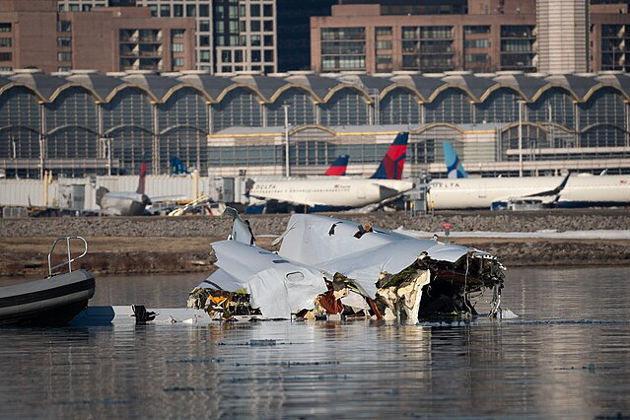Move FM Global News

NTSB probes visual limits in Black Hawk–airliner crash
Aug 5, 2025WASHINGTON, D.C.: Night-vision goggles have come under scrutiny in the fatal midair collision between a U.S. Army Black Hawk helicopter and an American Airlines passenger jet over Washington in January, with experts testifying before the National Transportation Safety Board (NTSB) that the helicopter pilots faced severe visual challenges.
At the NTSB’s final public hearing on August 1, specialists explained that the Army pilots’ night-vision goggles (NVGs) would have made spotting the passenger plane and interpreting its movements far more difficult.
Night-vision goggles, while vital for military operations in low light, have limitations. Experts told the Board that NVGs reduce peripheral vision and distort the appearance of colors, making it hard to distinguish the colored navigation lights that could have helped the Black Hawk crew gauge the jet’s direction and speed. Compounding the difficulty, the helicopter was flying in the densely lit airspace near Ronald Reagan Washington National Airport, where separating the aircraft from ground lights is notoriously challenging.
Stephen Casner, a human factors expert and former NASA researcher, emphasized that in such conditions, “knowing where to look” becomes critical. In this case, the passenger plane was landing on a secondary runway rarely used by most incoming aircraft, meaning the Army pilots may not have anticipated its location.
The January crash killed all 67 people aboard both aircraft — including a group of young elite figure skaters, their families and coaches, and four union steamfitters from the Washington area — and was the deadliest U.S. aviation accident since November 2001.
Over three days of testimony, the Board has examined numerous factors that may have contributed, from procedural lapses to long-standing hazards in helicopter flight routes near Reagan National. NTSB Chair Jennifer Homendy criticized the Federal Aviation Administration (FAA) for ignoring prior warnings about these dangers and urged the agency to “do better.”
While the investigation is still months away from pinpointing a definitive cause — a final report is expected next year — evidence shows the Black Hawk was operating above the prescribed 200-foot altitude limit for that route and was farther west from the Potomac River’s east bank than recommended, putting it closer to airliner traffic.
Another point of contention emerged over FAA protocols for post-crash alcohol testing of air traffic controllers. Homendy noted that such testing is most effective within two hours and permitted up to eight hours after an incident. Yet, FAA acting deputy chief operating officer Nick Fuller testified that no controllers were tested because the crash was not immediately deemed fatal. NTSB board member Todd Inman countered that fatalities were confirmed within 20 minutes, questioning the decision to forgo testing. Fuller said the agency is now revising its drug and alcohol testing procedures.
Civilian pilots have also long raised concerns about military helicopter operations near Reagan National. Rick Dressler of Metro Aviation told the Board that spotting aircraft at night is especially difficult if an onboard locator transponder is switched off — something Army helicopters routinely do for operational security. He also warned that some military pilots flying in the area are relatively inexperienced with Washington’s complex airspace. The Army did not immediately comment on his testimony but invited Dressler to share his concerns directly with Pentagon officials.
Investigators also reviewed cockpit audio from the Black Hawk, which had been in contact with air traffic control. Twice in the minutes before impact, the helicopter crew reported having the American Airlines jet in sight and assured they would maintain separation.
However, when the controller instructed them to “pass behind” the jet, the message went unheard because the Black Hawk’s radio transmitter was keyed at the same time.
Moments before the crash, an instructor pilot suggested a slight left turn — “Kinda come left for me ma’am” — to which the pilot responded, “Sure,” but it is unclear whether there was time to react.
John Cox, a retired airline captain and aviation safety consultant, said the hearings are uncovering the right questions to prevent future tragedies. He noted the small margin of error for helicopters flying that route and the troubling discrepancy between the Black Hawk’s actual altitude — 80 to 100 feet higher than indicated by its altimeter — and the altitude the pilots believed they were maintaining.


